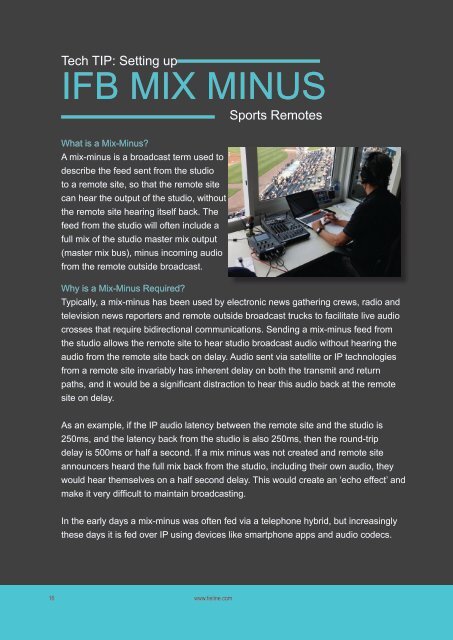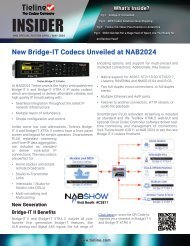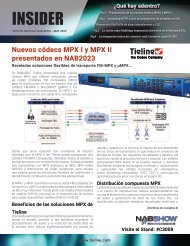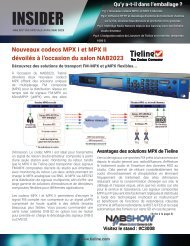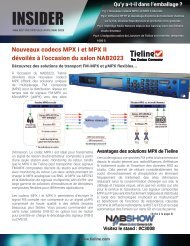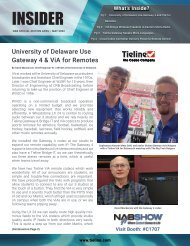(English) 2019 eBook
The Latest Trends in Remote IP Codecs - IP has become the predominant technology for streaming live remote broadcasts. This eBook outlines the latest innovations delivering flexible and powerful solutions to broadcasters around the world.
The Latest Trends in Remote IP Codecs - IP has become the predominant technology for streaming live remote broadcasts. This eBook outlines the latest innovations delivering flexible and powerful solutions to broadcasters around the world.
- No tags were found...
You also want an ePaper? Increase the reach of your titles
YUMPU automatically turns print PDFs into web optimized ePapers that Google loves.
Tech TIP: Setting up<br />
IFB MIX MINUS<br />
Sports Remotes<br />
What is a Mix-Minus?<br />
A mix-minus is a broadcast term used to<br />
describe the feed sent from the studio<br />
to a remote site, so that the remote site<br />
can hear the output of the studio, without<br />
the remote site hearing itself back. The<br />
feed from the studio will often include a<br />
full mix of the studio master mix output<br />
(master mix bus), minus incoming audio<br />
from the remote outside broadcast.<br />
Why is a Mix-Minus Required?<br />
Typically, a mix-minus has been used by electronic news gathering crews, radio and<br />
television news reporters and remote outside broadcast trucks to facilitate live audio<br />
crosses that require bidirectional communications. Sending a mix-minus feed from<br />
the studio allows the remote site to hear studio broadcast audio without hearing the<br />
audio from the remote site back on delay. Audio sent via satellite or IP technologies<br />
from a remote site invariably has inherent delay on both the transmit and return<br />
paths, and it would be a significant distraction to hear this audio back at the remote<br />
site on delay.<br />
As an example, if the IP audio latency between the remote site and the studio is<br />
250ms, and the latency back from the studio is also 250ms, then the round-trip<br />
delay is 500ms or half a second. If a mix minus was not created and remote site<br />
announcers heard the full mix back from the studio, including their own audio, they<br />
would hear themselves on a half second delay. This would create an ‘echo effect’ and<br />
make it very difficult to maintain broadcasting.<br />
In the early days a mix-minus was often fed via a telephone hybrid, but increasingly<br />
these days it is fed over IP using devices like smartphone apps and audio codecs.<br />
16 www.tieline.com


